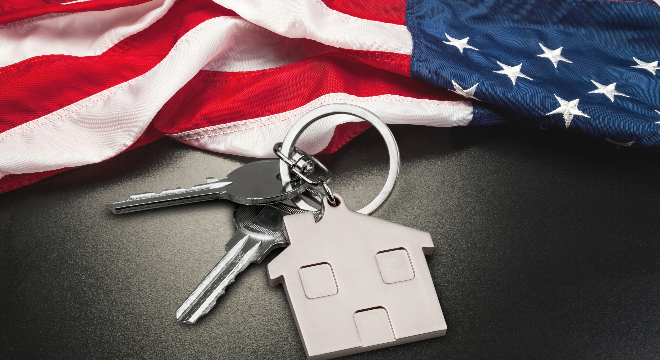What Is an FHA Loan?
An FHA loan is a mortgage insured by the US Federal Housing Administration. It’s available to borrowers whose income, credit history, or down payment resources don’t meet conventional lending standards.
Normally, lenders have high financial requirements because they bear the full risk of a home loan. FHA backing shifts some of that risk from lenders to the federal government, enabling lenders to work with borrowers who normally wouldn’t qualify. In some years, well over a million households have used FHA programs to buy or refinance their house.
When people talk about “FHA loans,” they’re generally referring to standard (forward) mortgages on single-family homes. That’s the focus of this article. However, there are also programs for reverse mortgages (HECM), multifamily buildings, and even healthcare facilities.
FHA Loan Pros & Cons
FHA loans makes home ownership possible for millions of households that don’t meet conventional underwriting standards.
Even those that do qualify for conventional loans might prefer the lower down payments that FHA mortgages permit.
But there’s no free lunch. FHA loans serve a riskier pool of buyers, on average, which translates to slightly higher interest rates as well as two mortgage insurance premiums.
Moreover, the goal of the program is to get more Americans into a decent primary residence of their own. Several things can make a property ineligible:
- Loan amounts above the county’s limit.
- Use as a second or investment property.
- Structural or livability issues, even if you intend to fix them.
Qualifying for an FHA Loan
To qualify for an FHA loan, you’re generally required to show or provide:
- At minimum, a FICO score of 500 and a down payment of 10% or a FICO score of 580 and a down payment of 3.5%.
- A debt-to-income ratio of no more than 50% (although most lender prefer less).
- A loan amount under the regional limit. For single-family homes, the limit ranges from $472,030 to $1,089,300 depending on the borrower’s location.
- Few (ideally zero) recent late payments and no track record of foreclosure, bankruptcy, or delinquency.
- Generally, two years of employment and/or other steady sources of income.
- Two mortgage insurance premiums (MIPs): 1.75% of the loan amount up front, plus an annual 0.15%–0.75% depending on the terms of the loan.
- Owner occupancy for at least the first year.
- Meeting certain structural and livability standards.
Contrary to popular belief, FHA loans do not have a minimum or maximum income. However, Washington’s own FHA down payment assistance (DPA) programs do have their own income limitations (among other requirements).
How to Get an FHA Loan
Getting an FHA loan is similar to getting any other mortgage, but with a more limited choice of lenders.
- Research Lenders: Not all lenders offer FHA loans. You’ll need to work an FHA-approved lenders, such as our team here at David Haley Mortgage.
- Considering Getting Pre-qualified: Pre-qualification (as distinct from pre-approval) means the lender think you’re likely to qualify for an FHA loan. Think of it as a quick check for planning purposes, not a detailed financial assessment.
- Choose a Property: Find a home that meets HUD Minimum Property Standards, such as durability requirements and local building code compliance. Rely on your local real estate agent to help narrow your search.
- Submit an Offer: Once you find a home, submit an offer and negotiate with the seller. Reasonable offer terms will depend on the local market and the specific property, so your agent’s help is invaluable.
- Complete the Application Process: If the offer is accepted, then it’s time to move forward with the full FHA loan application process. Be prepared to gather financial information quickly, then sit back and wait while the lender and other parties do their due diligence.
- Close the Deal: Attend the closing meeting, sign a mountain of paperwork, send the down payment, and finally get the keys to your new home!
Most transactions follow this basic order, although we’ve simplified it for brevity.
In the next section, we’ll walk through the more complicated portions—application and closing—in a bit more detail.
The FHA Financing Process
You’ve found a preferred lender, perhaps gotten pre-qualified, and even identified a property you’d like to make an offer on.
Here’s how to make the loan (and your new home) a reality.
- Pre-approval: Once you have a clear idea of how much you’ll need to borrow, it’s time to make sure an FHA lender is willing to work with you. They’ll take an initial look at your finances to see whether they’re willing to lend to you, and if so, the terms they may be able to offer. Pre-approval is helpful both for your own house hunt and for showing sellers that your offer is realistic.
- Application: Once you’re ready to apply for a specific loan on a specific house, your lender will guide you through the FHA mortgage application process. It usually involves quite a bit of paperwork and financial information—think bank statements, pay stubs, and tax returns. It’s a lot to stay on top of, so the lender will help you check all the boxes.
- Property Appraisal: Your lender will arrange an appraisal (and usually an inspection) to determine fair market value and unearth any defects or issues. This helps the lender understand the value of the property, so they can estimate and manage their risk.
- Loan Estimate: If you’re tentatively approved, your lend will give a loan estimate that details the precise amount, interest rate, and anticipated closing and other costs.
- Underwriting: The lender will review your application, resources, creditworthiness, and every last detail of your financial life. It’s a painstaking process, since they’re trying to determine whether the terms of your loan represent an acceptable risk. Your task is simply to wait—and perhaps provide more information upon request. If everything checks out, then congrats: it’ll be time to close!
FHA Loan Limitations in Washington State
The FHA loan limits in Washington State can vary depending on the county and are updated annually. These limits set the maximum loan amounts for FHA financing in the state. Borrowers should be aware that:
- Loan limits vary by county, based on average local home prices. Currently, the FHA allows county limits as low as $472,030 or as high as $1,089,300 for single-family homes.
- Limits are updated annually as the FHA tracks national and regional housing markets.
- Limits are higher in high-cost areas like King County, and lower in (relatively) affordable markets.
Always check the latest loan limits for your specific county, or consult with us to get the most current information.
At David Haley Mortgage, we aim to make the FHA loan process smooth and straightforward. Our team of experts can help you understand your eligibility, take advantage of other assistance programs, and above all, choose the right place to put down roots.








